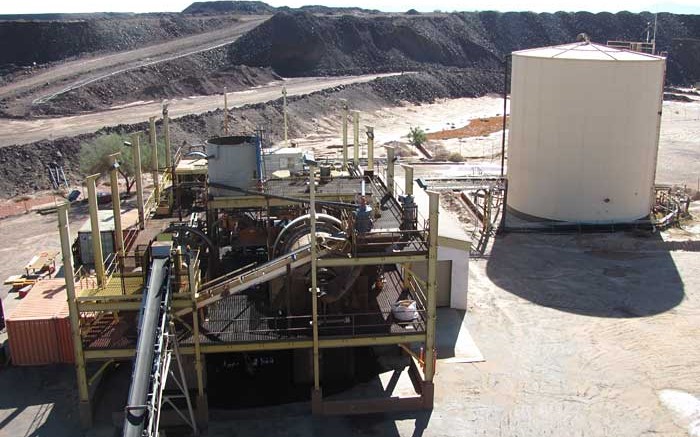Winnipeg-based junior miner San Gold (TSX: SGR; US-OTC: SGRCF) is merging with Toronto-based explorer and developer Kerr Mines (TSX: KER; US-OTC: AISDC). San Gold intends to use the skills it honed turning around its Rice Lake gold mine complex in Manitoba on Kerr’s recently acquired Copperstone gold mine in Arizona.
The proposed all-share combination reflects San Gold’s strategy of running its Rice Lake complex near Bissett, Man., at its highest level to “match the geometry of the orebodies,” the company’s president Gestur Kristjansson said in a release.
Not too long ago, San Gold suffered from setting its production targets too high and not meeting them at its Rice Lake. This frustrated investors, as the junior operated the complex — consisting of the 007, Hinge and Rice Lake mines — at a loss.
To fix this problem San Gold changed its management team, hiring Kristjansson as president and CEO and Mandeep Rai as chief financial officer in March. It later gave the CEO role to mining veteran Greg Gibson in June.
Gibson initially joined San Gold as a director last September and is the CEO of Kerr Mines. He told The Northern Miner that the operation is running at its proper run rate and not as an annual 100,000 oz. producer.
“Rice Lake has basically figured out what it wants to be when it grows up, or what it has to be when it grows up. It’s a 50,000 to 60,000 oz. producer of moderate grade, and that’s what it is. It’s no more or no less. It has taken this long to figure it out, and that’s the way we are going to mine it. If we continue mining it to that recipe it will be successful.”
Given Rice Lake was previously envisioned as a bigger mine, it has extra equipment and engineering, and geology manpower available to operate another asset, which explains why San Gold is eager to merge with Kerr.
“The Rice Lake complex was just way overbuilt, and you have to support it with production,” Gibson says. “And the focus of both Kerr and San Gold is to produce ounces and not tonnes, so we need the additional ounces, and Copperstone delivers that in a higher-grade operation that’s 85% developed, with the full infrastructure in place.”
Gibson says the merger is a perfect way to grow San Gold and reduce its debt. He notes the turnaround at Rice Lake is 80% complete, with the operation meeting its monthly production guidance. While more work is needed, Gibson stresses that the company has reduced costs and increased recoveries.
During the first quarter, San Gold reported a net loss of 2¢ per share, up slightly from a 3¢-per-share loss in the same period last year. Some highlights during the period included putting in a new mine plan and transitioning to long-hole mining. It slightly brought down the total cost per ton to $106 and increased mill recoveries to 94%.
Gibson adds that the operation is on track to produce positive cash flow by year-end.
“San Gold has made tremendous strides in its turnaround over the past three months,” Kerr’s chairman Stephen McIntyre said in the release. “The next step to creating a mid-tier producer will be applying the same principles to the Copperstone property,” he added.
Kerr received the past-producing Copperstone mine through its acquisition of American Bonanza in June. San Gold notes the property is similar in size to the Rice Lake mine, and could restart production for little capital under a combined management team.
Under the terms of the non-binding letter of intent, each Kerr shareholder will receive a number of San Gold shares for every Kerr share held, based on an exchange ratio that will be determined shortly. The companies will sign a definitive agreement before September.
Along with Copperstone, Kerr holds several gold properties near Virginiatown, Ont., on the 200 km long Cadillac–Larder break that straddles the Ontario–Quebec border. These assets include the McGarry and Cheminis gold mines, which it is exploring and developing in the Kirkland Lake area.
In May, Kerr received the Larder Lake gold project through its acquisition of Bear Lake Gold. The project sits just west of the McGarry mine and is under an option and joint-venture agreement with Gold Fields Abitibi Exploration, a subsidiary of Gold Fields (NYSE: GFI).
Kerr also has a five-year option to buy the past-producing Kerr–Addison property, next to McGarry. The Kerr–Addison gold mine was one of Canada’s largest gold producers, generating more than 11 million oz. gold over its 58-year operating life that ended in 1996.
The proposed merger will have a reciprocal break fee of $1 million.
San Gold has 373 million shares outstanding, while Kerr plans to consolidate its 1.3 billion shares to 88.2 million.
On the merger news, San Gold closed July 21 up 3.4% at 15¢, while Kerr fell 16.7% to 2.5¢.


Be the first to comment on "San Gold to merge with Kerr Mines"